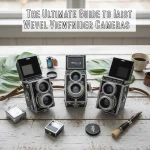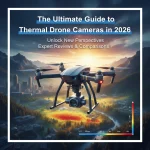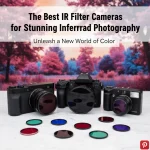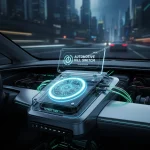[Get the best value waist level viewfinder camera on Amazon today!]
# The Ultimate Guide to Waist Level Viewfinder Cameras
Waist level viewfinder cameras. The name itself evokes a sense of vintage charm, doesn’t it? If you’re intrigued by the unique shooting experience they offer, or perhaps you’re a seasoned photographer looking to rediscover a classic, then you’ve come to the right place. This guide will cover everything you need to know about waist level viewfinder (WLVF) cameras, from their history and advantages to how to choose the right one for your needs. Get ready to dive deep into the world of these fascinating cameras!
[Browse top-rated waist level viewfinder camera on Amazon]
## What is a Waist Level Viewfinder Camera?
At its core, a waist level viewfinder camera is a camera where you view the image through a viewfinder located on the top of the camera body, typically at waist level. Instead of holding the camera up to your eye, you look down into the viewfinder, which projects an image onto a ground glass screen. This design offers a unique shooting experience, distinct from eye-level viewfinders found on most modern cameras.
This type of viewfinder was particularly popular in medium format cameras, offering a large and bright image for composing shots. While less common today, they still hold a special appeal for photographers seeking a different perspective and a more deliberate shooting process.
[Browse top-rated waist level viewfinder camera on Amazon]
## Why Choose a Waist Level Viewfinder?
So, why would anyone choose a waist level viewfinder camera over a more modern design? There are several compelling reasons:
* **A Different Perspective:** Shooting from waist level offers a unique perspective, allowing you to capture images from a lower angle without crouching down. This can be particularly useful for street photography, portraiture, and landscape photography.
* **Discreet Shooting:** Because you’re not holding the camera up to your face, you can often shoot more discreetly. This can be advantageous for street photography or capturing candid moments without disturbing your subjects.
* **Improved Composition:** The large ground glass screen in a WLVF provides a bright and clear image, making it easier to compose your shots accurately. You can see the entire frame and make precise adjustments to your composition.
* **More Relaxed Posture:** Holding the camera at waist level can be more comfortable for some photographers, especially during long shooting sessions. It can reduce strain on your neck and shoulders.
* **A Vintage Aesthetic:** Let’s be honest, using a waist level viewfinder camera is just plain cool! It adds a touch of vintage charm to your photography and sets you apart from the crowd.
* **Slower, More Deliberate Process:** The WLVF forces you to slow down and really consider your composition. You’re not just snapping away; you’re carefully crafting each image.
[Browse top-rated waist level viewfinder camera on Amazon]
## Types of Waist Level Viewfinder Cameras
Waist level viewfinders can be found on various types of cameras, but they are most commonly associated with medium format cameras. Here’s a breakdown of the different types:
* **Twin-Lens Reflex (TLR) Cameras:** TLR cameras have two lenses: one for taking the picture and one for the viewfinder. The viewfinder lens projects an image onto the ground glass screen, allowing you to see what you’re shooting. Classic examples include the Rolleiflex and Yashica Mat.
* **Single-Lens Reflex (SLR) Cameras with WLVF Attachments:** Some SLR cameras allow you to attach a waist level viewfinder in place of the standard eye-level viewfinder. This provides the same waist-level shooting experience on a more versatile camera body.
* **Medium Format Rangefinders with WLVF Attachments:** Certain medium format rangefinders, like some models from Mamiya, also offer waist level viewfinder attachments.
* **Large Format Cameras:** While not strictly “waist level,” large format cameras often involve composing the image on a ground glass screen, which is a similar process.
[Browse top-rated waist level viewfinder camera on Amazon]
## Choosing the Right Waist Level Viewfinder Camera: A Comprehensive Guide
Now that you understand the basics of waist level viewfinder cameras, let’s dive into how to choose the right one for your needs. Here’s a comprehensive guide to the factors you should consider:
### 1. Camera Type
The first step is to decide what type of camera you want. Do you want a classic TLR, an SLR with a WLVF attachment, or a medium format rangefinder? Each type has its own advantages and disadvantages.
* **TLR Cameras:** TLR cameras are relatively simple and reliable. They are a great option for beginners who want to experience the WLVF shooting style. However, they typically have fixed lenses, which can limit your creative options.
* **SLR Cameras with WLVF Attachments:** SLR cameras offer more versatility than TLR cameras. You can change lenses, adjust settings, and use a variety of accessories. However, they can be more complex to operate and maintain.
* **Medium Format Rangefinders with WLVF Attachments:** These offer a blend of image quality and portability, with the ability to change lenses. They are often more expensive.
### 2. Format Size
The format size refers to the size of the film or sensor used in the camera. Medium format cameras, which are often associated with waist level viewfinders, typically use 120 film, producing larger negatives or slides than 35mm film.
* **6×6:** This square format is a classic choice for TLR cameras. It offers a unique aesthetic and is well-suited for a variety of subjects.
* **6×7:** This format is slightly rectangular and is often used in medium format rangefinders and SLRs. It provides a good balance between image quality and portability.
* **6×4.5:** This is a smaller medium format size, offering more shots per roll of film.
Consider the format size based on your desired image quality, the types of prints you plan to make, and the availability of film.
### 3. Lens Quality and Options
The lens is one of the most important factors to consider when choosing a waist level viewfinder camera. Look for a lens that is sharp, has good contrast, and is free from distortion.
* **Fixed Lenses:** TLR cameras typically have fixed lenses, meaning you cannot change them. Make sure the lens is a focal length that you find versatile. Common focal lengths for TLRs are 75mm and 80mm.
* **Interchangeable Lenses:** SLR and rangefinder cameras with WLVF attachments offer the option to change lenses. This allows you to use a variety of focal lengths and experiment with different perspectives.
### 4. Viewfinder Quality
The quality of the viewfinder is crucial for accurate composition and focusing. Look for a viewfinder that is bright, clear, and easy to focus.
* **Magnification:** Some waist level viewfinders offer magnification, which can be helpful for focusing.
* **Brightness:** A brighter viewfinder will make it easier to see the image, especially in low-light conditions.
* **Focusing Screen:** The focusing screen is the ground glass surface where the image is projected. Look for a screen that is clean and free from scratches. Some screens also have focusing aids like split-image rangefinders or microprism collars.
### 5. Camera Condition
If you’re buying a used waist level viewfinder camera, it’s important to carefully inspect its condition.
* **Lens:** Check the lens for scratches, fungus, and haze.
* **Viewfinder:** Check the viewfinder for dust, dirt, and scratches.
* **Shutter:** Test the shutter to make sure it is working properly at all speeds.
* **Film Advance:** Make sure the film advance mechanism is smooth and reliable.
* **Light Seals:** Check the light seals to make sure they are in good condition and preventing light leaks.
* **Overall Condition:** Look for signs of wear and tear, such as dents, scratches, and corrosion.
### 6. Budget
Waist level viewfinder cameras can range in price from a few hundred dollars to several thousand dollars. Set a budget before you start shopping and stick to it.
### 7. Your Shooting Style
Consider your shooting style and the types of subjects you like to photograph. If you primarily shoot landscapes, you might want a camera with a wide-angle lens. If you primarily shoot portraits, you might want a camera with a longer lens.
### 8. Size and Weight
Some waist level viewfinder cameras can be quite large and heavy. If you plan to carry your camera around a lot, you might want to choose a smaller and lighter model.
[Browse top-rated waist level viewfinder camera on Amazon]
## Recommended Waist Level Viewfinder Cameras
Here are a few recommended waist level viewfinder cameras to get you started:
* **Rolleiflex 2.8F:** A classic TLR camera known for its exceptional image quality and build quality.
* **Yashica Mat 124G:** A more affordable TLR camera that is still capable of producing excellent results.
* **Mamiya RB67:** A modular medium format SLR camera with a wide range of lenses and accessories.
* **Hasselblad 500C/M:** Another classic medium format SLR camera known for its exceptional image quality and build quality.
These are just a few of the many excellent waist level viewfinder cameras available. Do your research and find the one that is right for you.
[Browse top-rated waist level viewfinder camera on Amazon]
## Using Your Waist Level Viewfinder Camera: Tips and Techniques
Once you’ve chosen your waist level viewfinder camera, it’s time to start shooting! Here are a few tips and techniques to help you get the most out of your camera:
* **Get Used to the Inverted Image:** Waist level viewfinders typically project an inverted image, meaning that left is right and right is left. This can take some getting used to, but with
[Check the latest prices and deals for waist level viewfinder camera on Amazon today!]











